Evergreen plants keep their leaves and needles all year long, and they provide safe shelter for birds and other wildlife during inclement weather. But evergreens can be highly ornamental, and keeping these easy-going plants in your garden can make your property feel much more private -- even when other trees have lost their leaves in winter. However, with tons of different evergreens to choose from, finding the right evergreens to grow in your outdoor space can, at times, feel impossible.
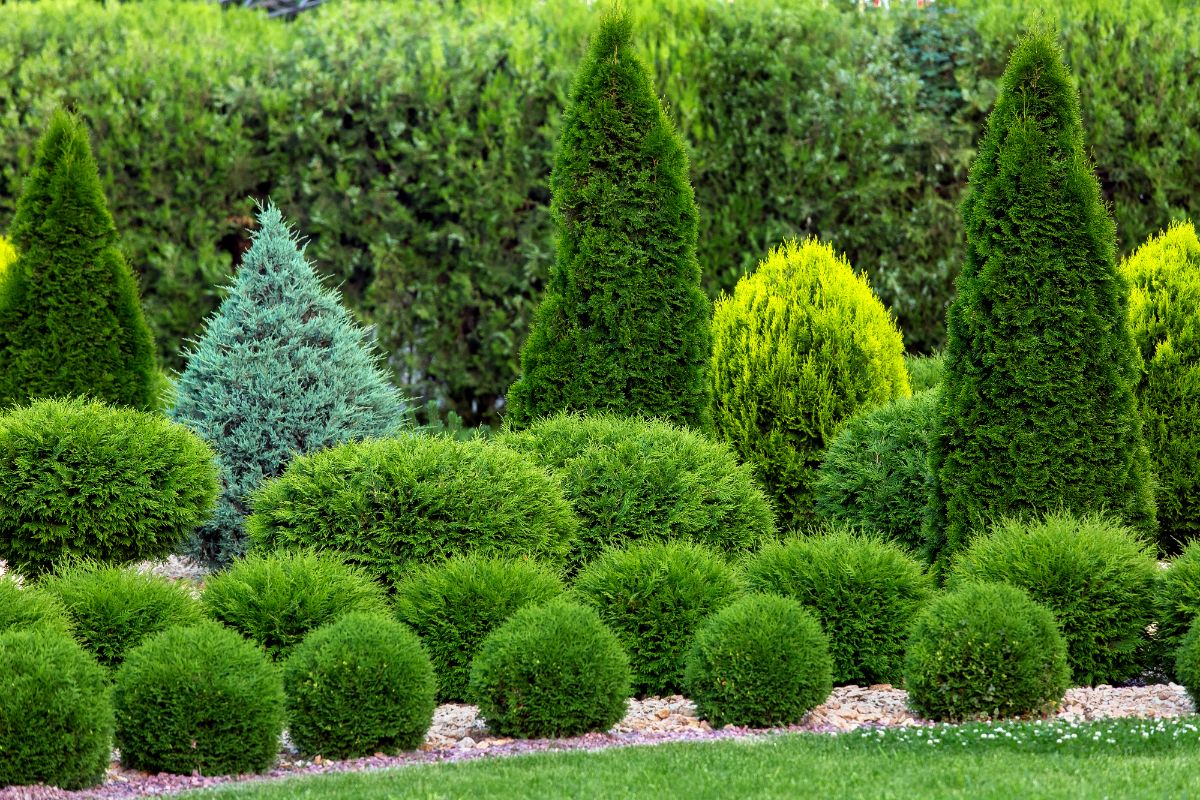
Some evergreens grow tall, while others are small enough to keep in pots on your front porch or patio. For even more variety, certain evergreen species offer colorful needles or leaves, bright flowers, or brilliant berries. And some plants even work well in topiaries!
No matter your gardening interest and style, you’ll find a wide range of stunning evergreen plants in the list below. Spring through winter, these plants will liven up your garden with rich color and make your outdoor space feel like your own private oasis!
Jump to:
- 15 evergreen trees to grow for year-round color and privacy
- 1. Spruce (Picea spp.)
- 2. Holly (Ilex spp.)
- 3. Pines (Pinus spp.)
- 4. Boxwood (Buxus spp.)
- 5. Arborvitae (Thuja spp.)
- 6. Firs (Abies spp.)
- 7. Hemlock (Tsuga spp.)
- 8. Rhododendron (Rhododendron spp.)
- 9. Yew (Taxus spp.)
- 10. Mountain laurel (Kalmia latifolia)
- 11. Juniper (Juniperus spp.)
- 12. Olive tree (Olea europaea)
- 13. Wintercreeper (Euonymus fortunei)
- 14. Azalea (Rhododendron spp.)
- 15. Winter daphne (Daphne odora)
- Frequently asked questions
- Summary
15 evergreen trees to grow for year-round color and privacy

Evergreen trees are mostly sold in nursery pots, but you can often purchase these plants bare root too. Depending on your budget and the size of your garden, you may want to buy large trees for a more finished look, or you may prefer to purchase smaller, fast-growing evergreens and grow the plants out in your garden yourself. Below, you’ll find some of the best evergreen trees and shrubs to grow in gardens and landscapes, including some ultra cold hardy specimens that are well-suited for even the coolest of climates!
1. Spruce (Picea spp.)
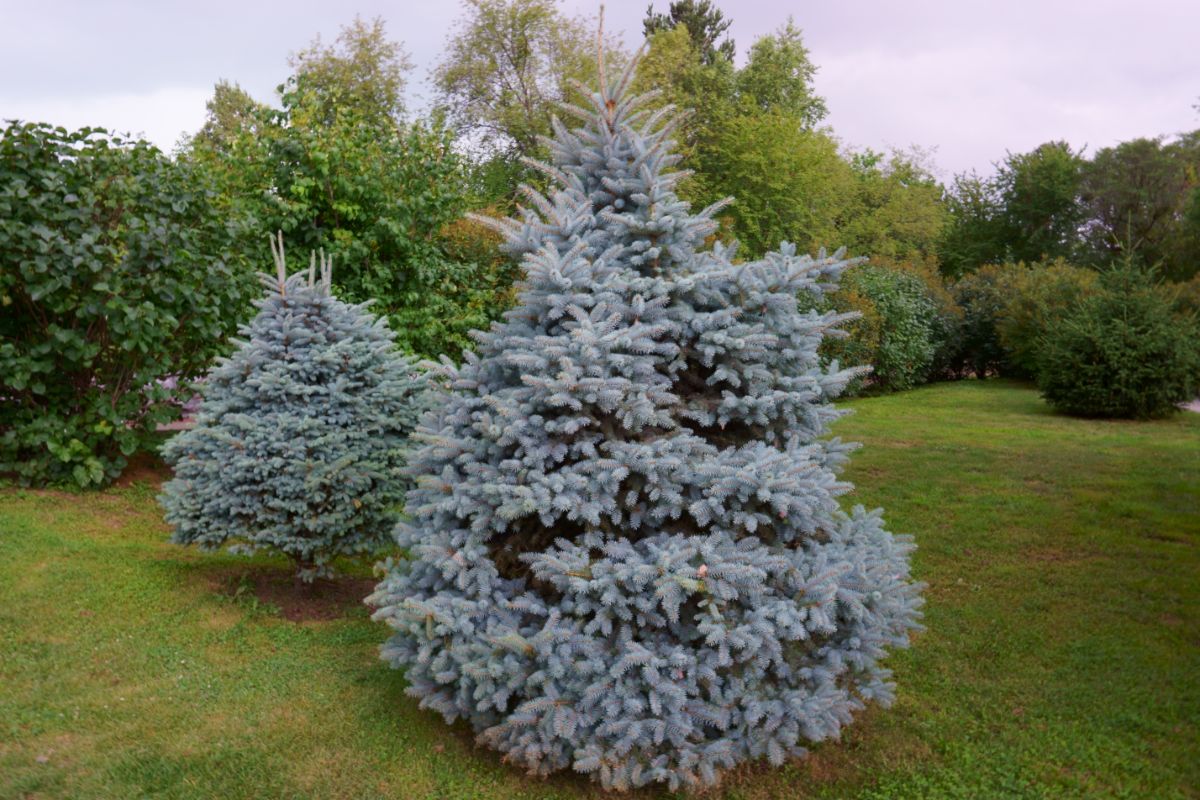
| Plant name: | Spruce |
| Light requirements: | Full sun to part shade |
| Water requirements: | Moderate |
| Growing zone: | Zones 3 to 7, most species |
| Special features: | Colorful needles; Shelter for wildlife; Fragrant needles |
Unlike pines, which have needles that are grouped in bunches, spruce trees have sharp needles that are attached to the trees’ branches individually. Typically tall trees, spruces have a lovely symmetrical shape, and their needles can range in hue from a golden yellow color to a blueish-green tone. Cold hardy, and resilient, spruce trees grow best in USDA zones 4 to 7, although a few species, such as Blue spruce, Norway spruce, and White spruce, will tolerate winters in chilly zone 3.
Most spruce trees grow quite large -- up to 60 to 80’ tall and 35’ wide; however, you can find dwarf cultivars too. The ‘Dwarf Alberta’ spruce, for instance, only grows to about 8’ in height, making it small enough to grow in mixed ornamental beds or containers.
An important tree species for wildlife, spruce trees offer protection for animals in harsh weather, and they provide winter shelter for birds and other critters too. On top of that, grouse are known to forage on spruce needles, while spruce seeds are gobbled up by a number of different birds and small mammals. In North America, some of the key species of native spruce trees include the Blue spruce, Black spruce, and Red spruce.
2. Holly (Ilex spp.)
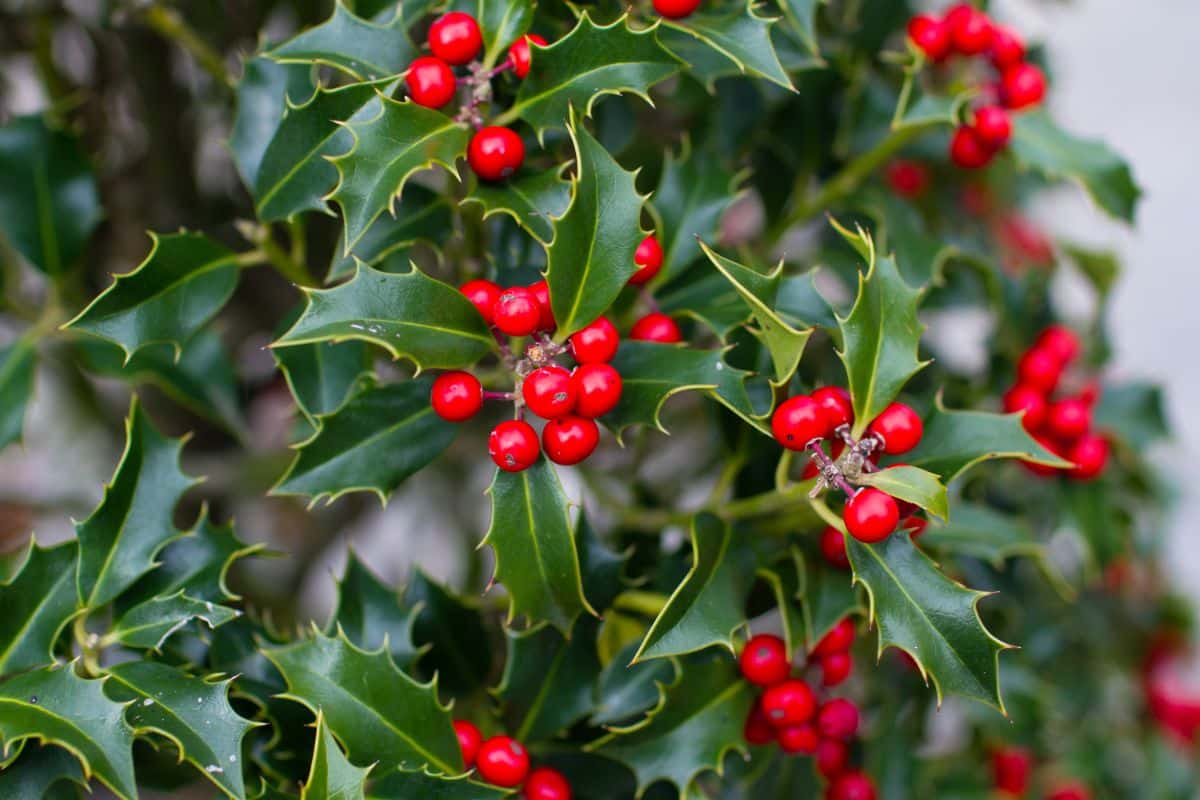
| Plant name: | Holly |
| Light requirements: | Full sun to part shade |
| Water requirements: | Moderate |
| Growing zone: | Zones 5 to 9 |
| Special features: | Red berries attract wildlife |
Commonly associated with the holidays, hollies are famed for their bright red berries and glossy leaves, which are fringed with spiky edges. There are over 480 different species of hollies, including native North American species like ‘American,’ ‘Mountain’ and ‘Dahoon’ hollies. Japanese hollies are also prized in landscape arrangements, and their compact size makes them useful in hedges and borders, as well as container gardens.
A popular pick for foundation plantings, hollies can also be used in hedges, garden borders, and topiaries, or they can be grown individually as backdrop or accent plants. Preferring full sun to partial shade and well-drained and slightly acidic soils, holly are relatively easygoing plants that don’t need a lot of extra fuss. Year-round, holly’s dense foliage provides shelter for wildlife, and holly berries are an important food for many wild birds, including cedar waxwings.
3. Pines (Pinus spp.)
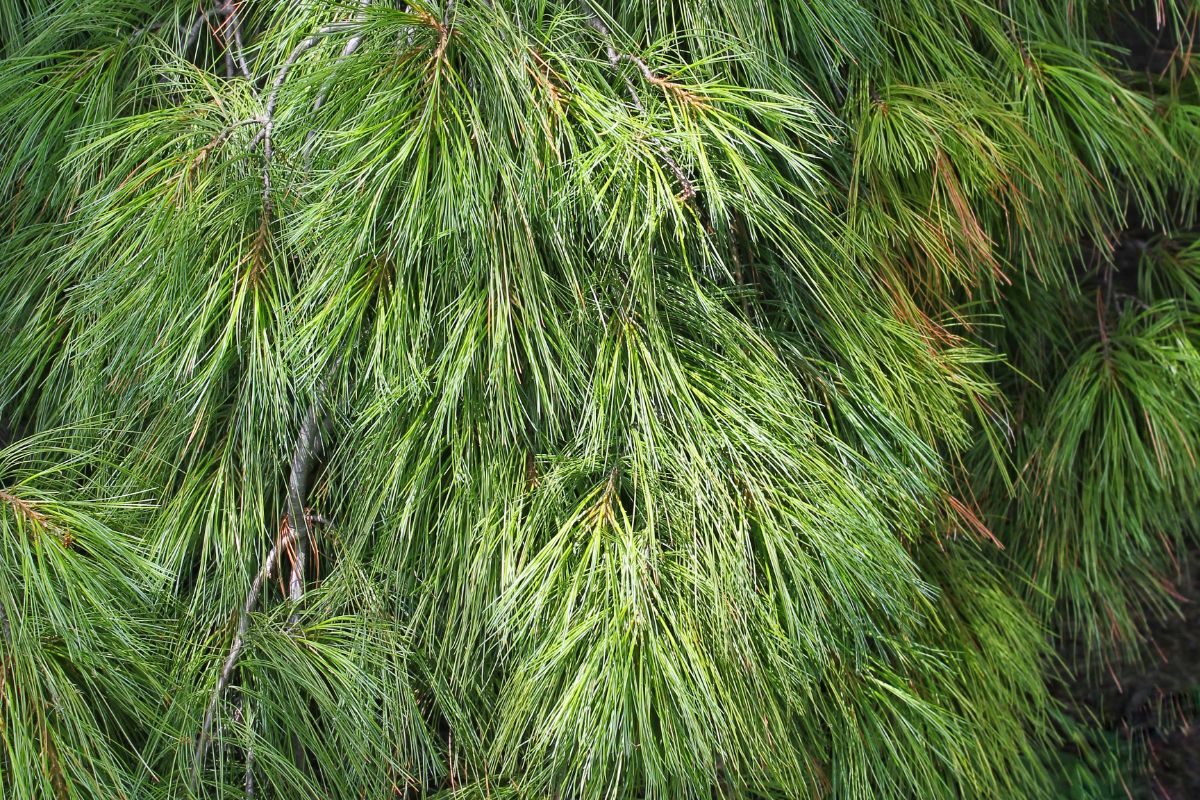
| Plant name: | Pines |
| Light requirements: | Full sun to part shade |
| Water requirements: | Moderate to low |
| Growing zone: | Zones 3 to 8, most species |
| Special features: | Shelter for wildlife; Fragrant needles |
Ever-popular pines are one of the most easily recognizable evergreen trees as their needles appear in clumps, and the needles have papery sheaths at their bases. A top plant to grow if you want to support your local ecosystem, pines provide food and shelter for wildlife, aid with erosion control, and are they’re hardy and aesthetically pleasing too! In gardens, pine trees can be planted as specimen trees, or they can be used as windbreaks and privacy hedges, or they can be grown at the border of properties as buffers against traffic noise.
Among gardeners, one of the most popular pine varieties include the ‘Weeping Eastern White’ pine, which is native to North America. This pine variety has a waterfall-like growth habit, which looks quite unique when the plant is allowed to grow naturally; however, this pine tree can be kept more upright with added support. Alternatively, the bristle cone (also native to North America) is another enchanting choice that is famed for its deep green needles and bold silhouette.
4. Boxwood (Buxus spp.)

| Plant name: | Boxwood |
| Light requirements: | Full sun to part shade |
| Water requirements: | Moderate |
| Growing zone: | Zones 5 to 9 |
| Special features: | Useful in topiaries and hedges |
Boxwood is a broadleaf evergreen shrub that’s most commonly used in hedges, although it can be planted as a specimen or accent plant too. First used as ornamentals in ancient Egypt in 4000 BC, boxwood plants feature rich green, glossy leaves, and their fast growth rate makes them exceptional choices for topiaries. Just be sure to provide boxwood plants with the right balance of sun and water, as these plants can be susceptible to certain issues, such as blight.
There are many different types of boxwoods to choose from, and different cultivars can be used in different ways. ‘Green Mountain,’ ‘Sprinter,’ and ‘Green Velvet’ are particularly good for topiaries, while ‘Pyramidal,’ ‘Columnar,’ and ‘Varder Valley’ are great selections for hedges. If you needed more reasons to try boxwood, these plants are usually deer and rabbit-resistant, and boxwoods offer excellent shelter for native birds, such as finches, chickadees, and sparrows.
5. Arborvitae (Thuja spp.)
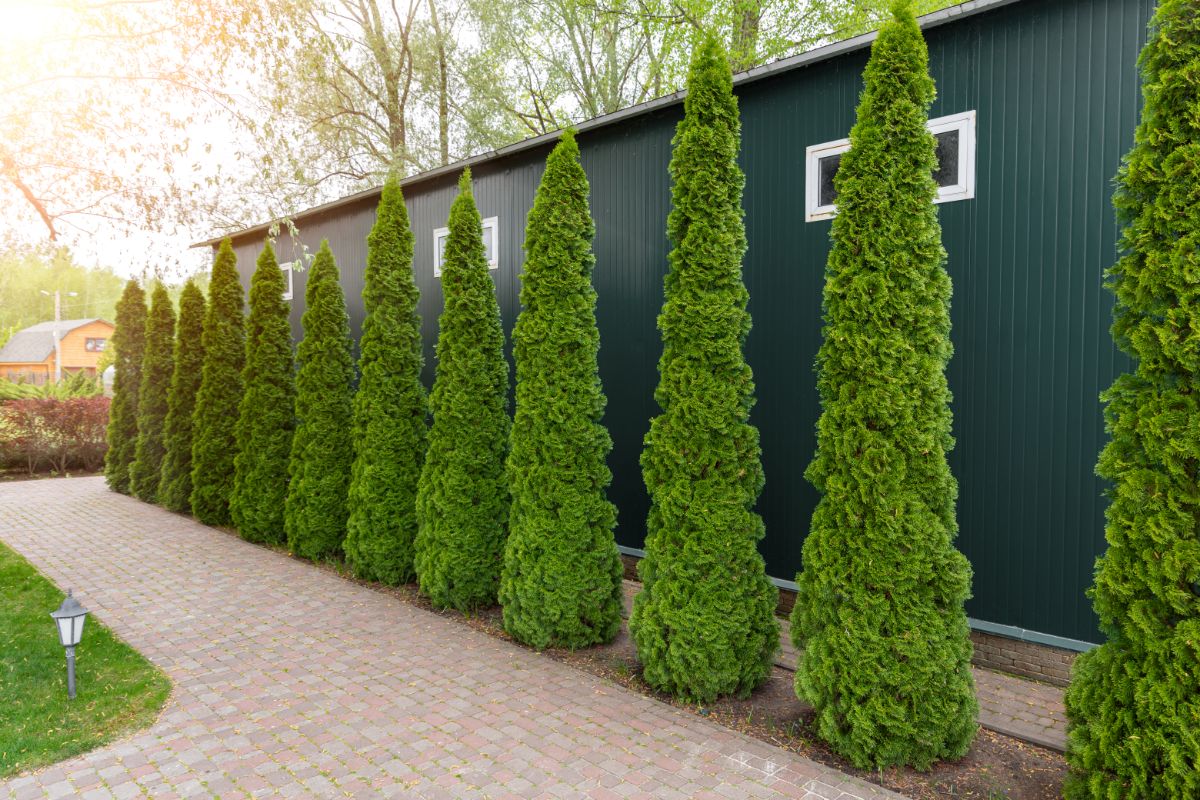
| Plant name: | Arborvitae |
| Light requirements: | Full sun to part shade |
| Water requirements: | High to moderate |
| Growing zone: | Zones 3 to 7 |
| Special features: | Useful in topiaries and hedges; Good for containers |
Fast-growing arborvitae are easily recognized by their strong silhouettes and elegant lines, and these plants are often grown around property lines. When used as hedges or privacy screens, arborvitae can help to block out traffic noise from nearby roadways, and they make garden spaces feel more like a private oasis. However, arborvitae also work well in topiaries, and small varieties, like the dwarf golden arborvitae, can be grown in containers too.
Compared to some of the other plants on this list, arborvitae can be relatively high maintenance, and these plants do best with regular watering. Arborvitae can also be susceptible to a variety of pests and diseases, and some gardeners wrap these plants in burlap and other coverings to protect them from winter damage. Interestingly, arborvitae’s name comes from Latin, and it translates into “tree of life,” as the Iroquois used these plants to treat scurvy.
6. Firs (Abies spp.)
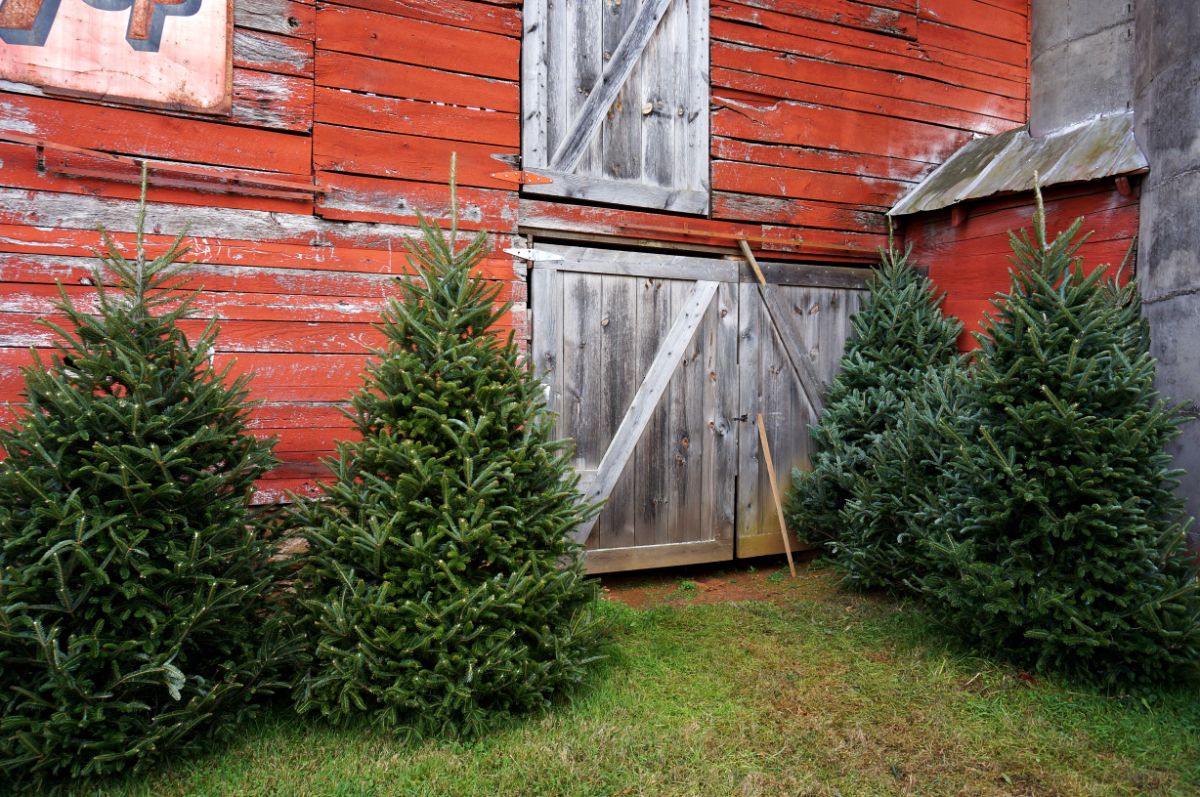
| Plant name: | Firs |
| Light requirements: | Full sun to part shade |
| Water requirements: | Moderate |
| Growing zone: | Zones 3 to 8, most species |
| Special features: | Shelter for wildlife |
Firs are commonly used as Christmas trees, and varieties like Balsam, Fraser, and Noble firs are very popular around the holidays. However, first are stately evergreens year-round, and they fit right into native gardens and mixed beds too. Easily distinguished from pines by their needle-like leaves, which are attached singly to the tree’s branches, firs have upright cones that are softer than the cones from many other conifers, and fir cones easily come apart at season’s end for seed dispersal.
Many firs are native to North America, including the Grand, Red, Silver, White, and Subalpine firs, as well as the species listed above. The Subalpine fir is frequently used in bonsai, while non-native Nordmann firs are small enough for container growing. Like other evergreens, firs provide year-round protection for wildlife, but they also make top-notch garden privacy screens.
7. Hemlock (Tsuga spp.)
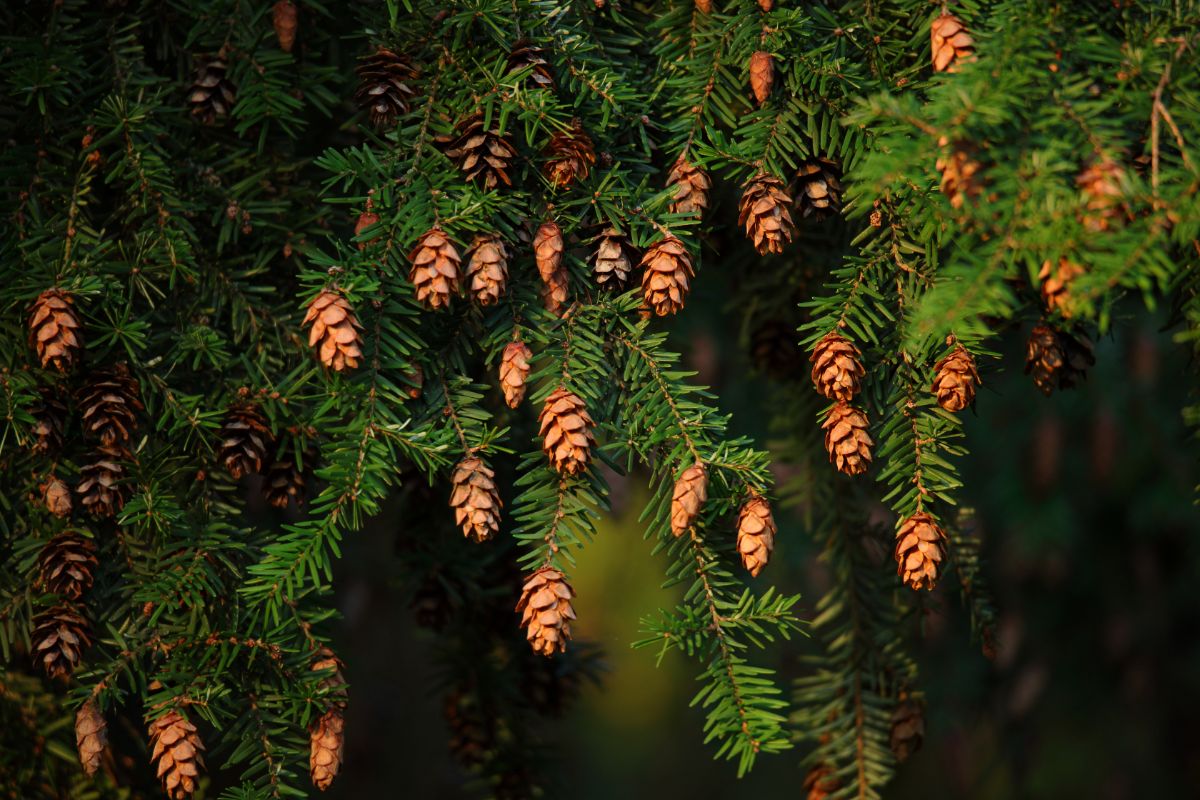
| Plant name: | Hemlock |
| Light requirements: | Full sun to shade |
| Water requirements: | High to moderate |
| Growing zone: | Zones 3 to 8, most species |
| Special features: | Shelter for wildlife; Fragrant needles |
Not to be confused with the plant used in Socrates’ drink (poison hemlock or Conium maculatum), hemlock trees make prime nesting spots for birds, and deer use them for shelter as well. Ultra cold hardy, hemlock trees make eye-catching specimen plants, but they are also commonly grown in hedges for extra privacy. These evergreen trees do like regular watering, though, so you will need to be conscious about their watering schedule.
Most hemlock species originally come from Asia, but a few types of hemlock are native to North America, including the eastern hemlock and Carolina hemlock. Full-sized trees can reach up to 70’ tall, but you can also find dwarf cultivars, such as 'Gentsch White’ and ‘Moon Frost,’ which are perfectly suited to smaller spaces. Weeping Canadian hemlock is another intriguing choice, which is famed for its cascading branches and curious silhouette.
8. Rhododendron (Rhododendron spp.)
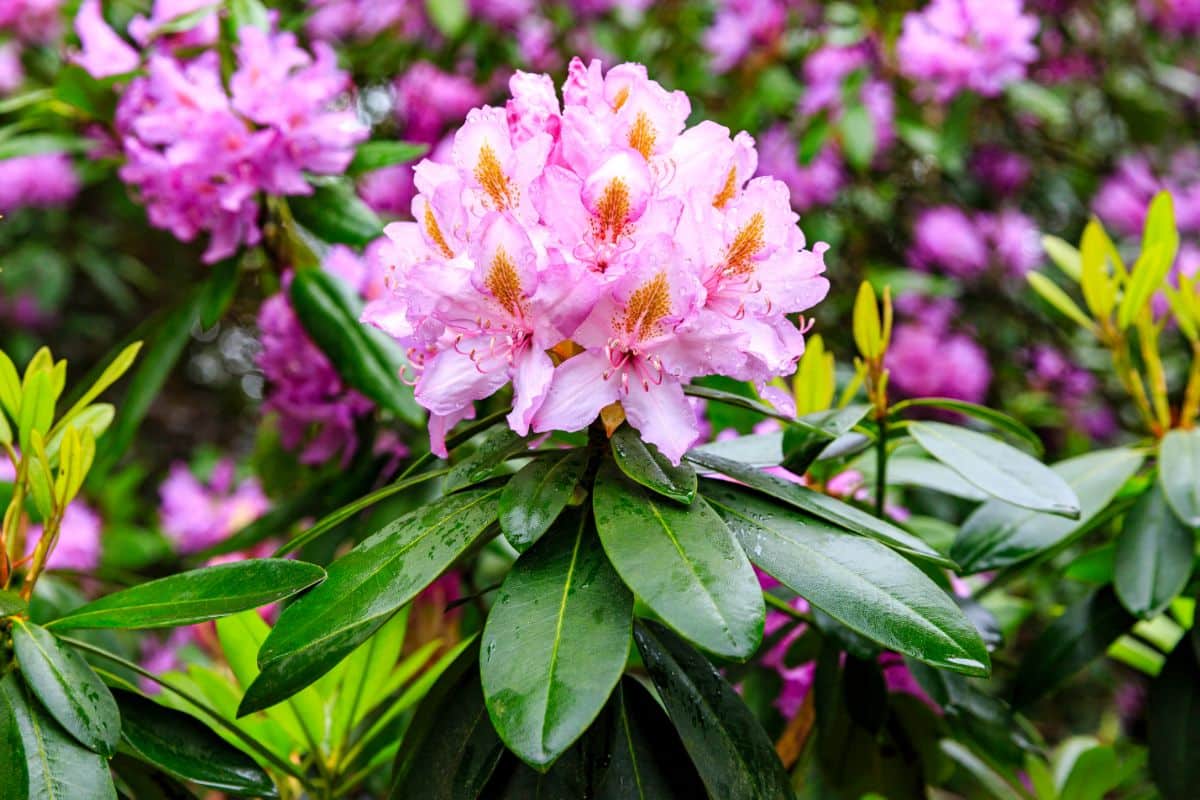
| Plant name: | Rhododendron |
| Light requirements: | Full sun to part shade |
| Water requirements: | Moderate |
| Growing zone: | Zones 4 to 9 |
| Special features: | Springtime flowers; Attracts pollinators |
Rhododendron is an extremely variable genus that ranges from groundcovers to shrubs to trees. Often grown in large groupings on their own, rhododendrons can also be paired with azaleas or other acid-loving plants like blueberries for a more nuanced planting design. Tall rhododendron species are solid choices for garden privacy screens, while low-growing species can be used as accent plants or grown along garden borders.
Most rhododendrons are deer-resistant, although deer will sometimes browse on these shrubs if food is scarce. And while rhododendrons have broad, evergreen leaves, these plants are mostly known for their colorful, spring-blooming flowers, which come in shades of pink, white, and purple. Most rhododendron species are shade-loving, and they prefer slightly acidic soil, while dwarf varieties can be grown in containers on porches and patios.
9. Yew (Taxus spp.)
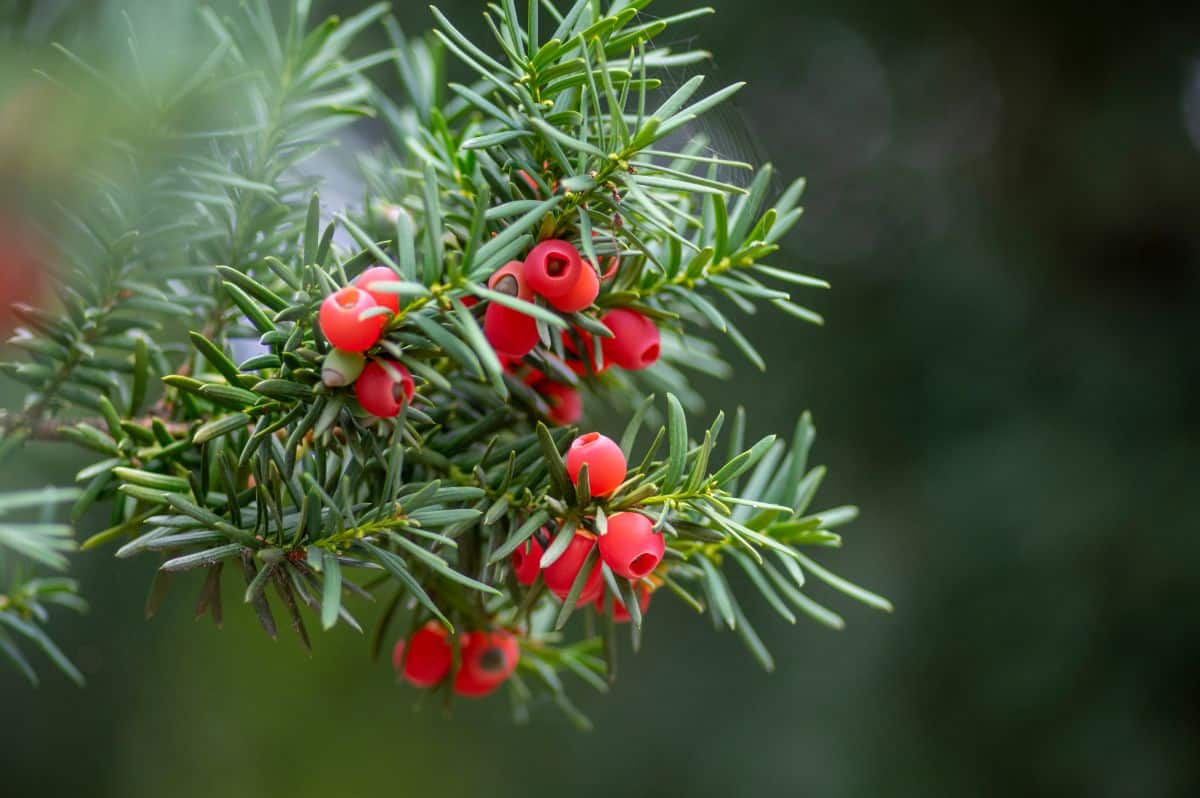
| Plant name: | Yew |
| Light requirements: | Full sun to part shade |
| Water requirements: | Moderate to low |
| Growing zone: | Zones 3 to 8 |
| Special features: | Colorful berries |
The yew family includes both trees and shrubs; however, these plants are highly toxic to humans and pets, and they shouldn’t be included in landscaping where young children and curious pets are present. It’s not unheard of for dogs playing with yew sticks to become extremely ill.
But while yew plants do come with their warnings, they are attractive species that produce lovely red berries that are greedily gobbled up by birds like thrushes and greenfinches. Many wildlife species use yew as both shelter and food, but these plants can also be used ornamentally in gardens as borders, hedges, foundation plants, and topiaries, or they can be planted en masse for an even greater impact.
While there are many varieties of yew, the Canada yew (Taxus canadensis) comes from North America, and it’s a particularly popular choice in native gardens.
10. Mountain laurel (Kalmia latifolia)
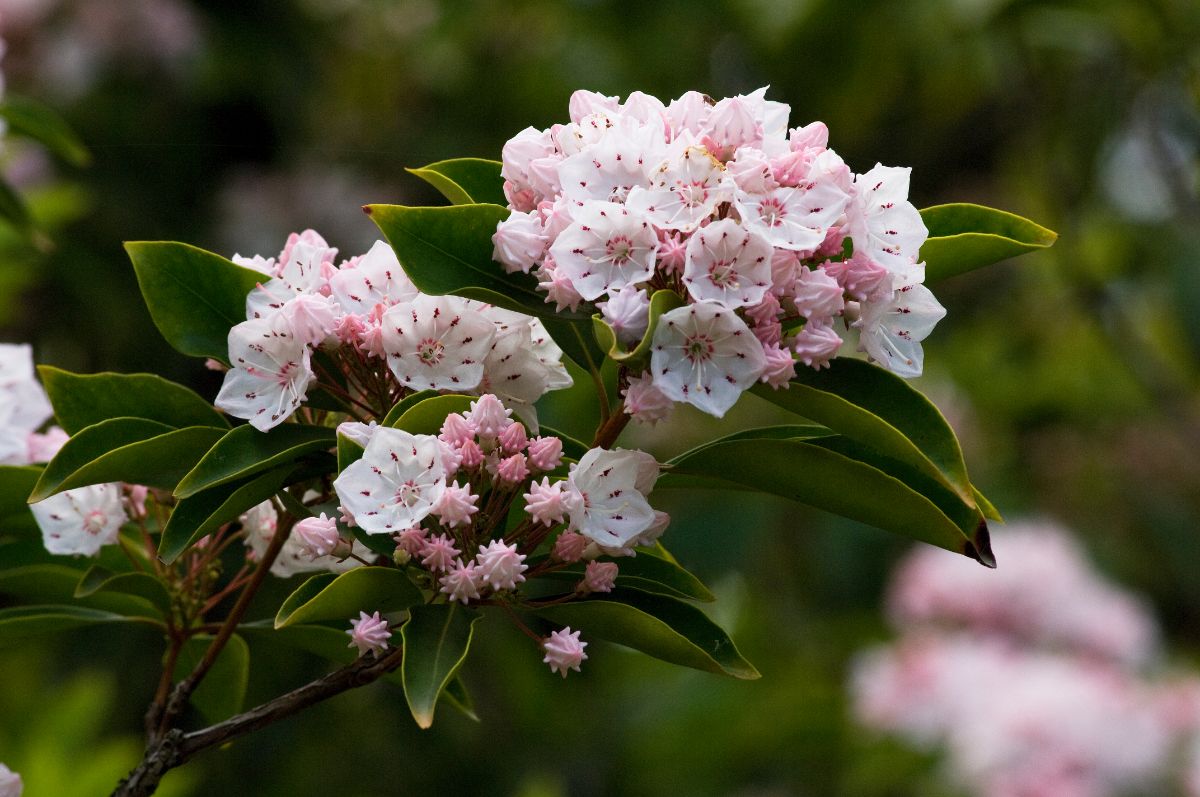
| Plant name: | Mountain laurel |
| Light requirements: | Part shade |
| Water requirements: | Moderate |
| Growing zone: | Zones 4 to 9 |
| Special features: | Colorful flowers attract pollinators |
This North American native is sure to light up garden beds with its stunning springtime flowers, but mountain laurels also work as privacy hedges and foundation plants as well. A close relative of rhododendrons and azaleas, mountain laurels grow best in acidic soils, plenty of shade, and cool, moist air. Since they can be picky about their care requirements, if you want to grow mountain laurels, it’s important that you choose a variety that’s well-suited to your growing region.
While mountain laurels are toxic to pets and children, these plants do offer a lot of benefits to native gardens and wildlife habitats. Deer frequently browse in mountain laurel bushes, while these plants also provide winter cover for birds and other small species. Hummingbirds, butterflies, and other pollinators frequently flock to mountain laurel blooms when the plant is in flower from May to June.
11. Juniper (Juniperus spp.)
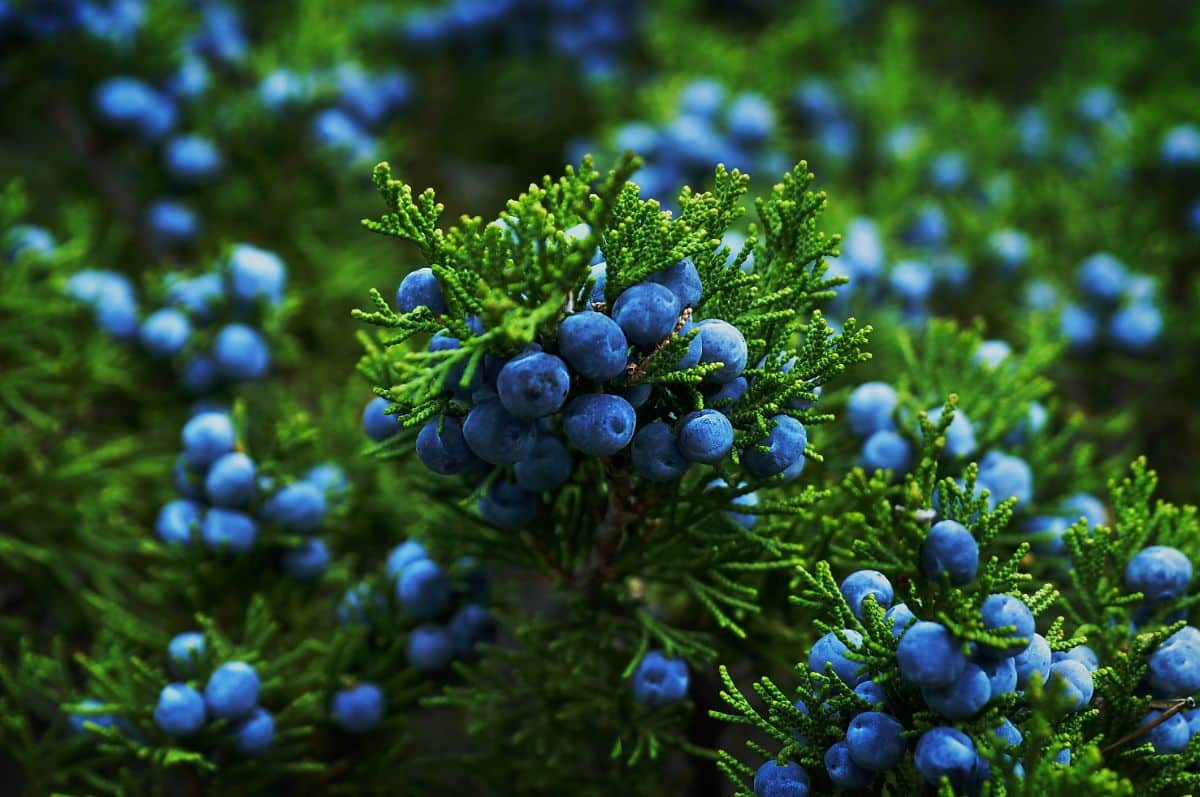
| Plant name: | Juniper |
| Light requirements: | Full sun to part shade |
| Water requirements: | Moderate to low |
| Growing zone: | Zones 3 to 9 |
| Special features: | Drought tolerant; Groundcover; Erosion control |
Junipers are available in both tall and creeping varieties, and they can be used as groundcovers, privacy hedges, and foundation plants. Junipers are also ideal for erosion control, and small varieties look becoming in container gardens too. Generally low maintenance and resilient in cold weather, junipers are good plants to try if you want to add a splash of lovely color to your winter garden.
Like many other evergreens, junipers provide exceptional value to wildlife. Many juniper species produce berries in autumn, which are eaten up by birds and other wildlife, and the dense foliage of juniper shrubs also makes a cozy nesting site for birds. Interestingly, juniper berries have been used to flavor gin, while juniper leaves make colorful additions to holiday wreaths and garlands.
12. Olive tree (Olea europaea)
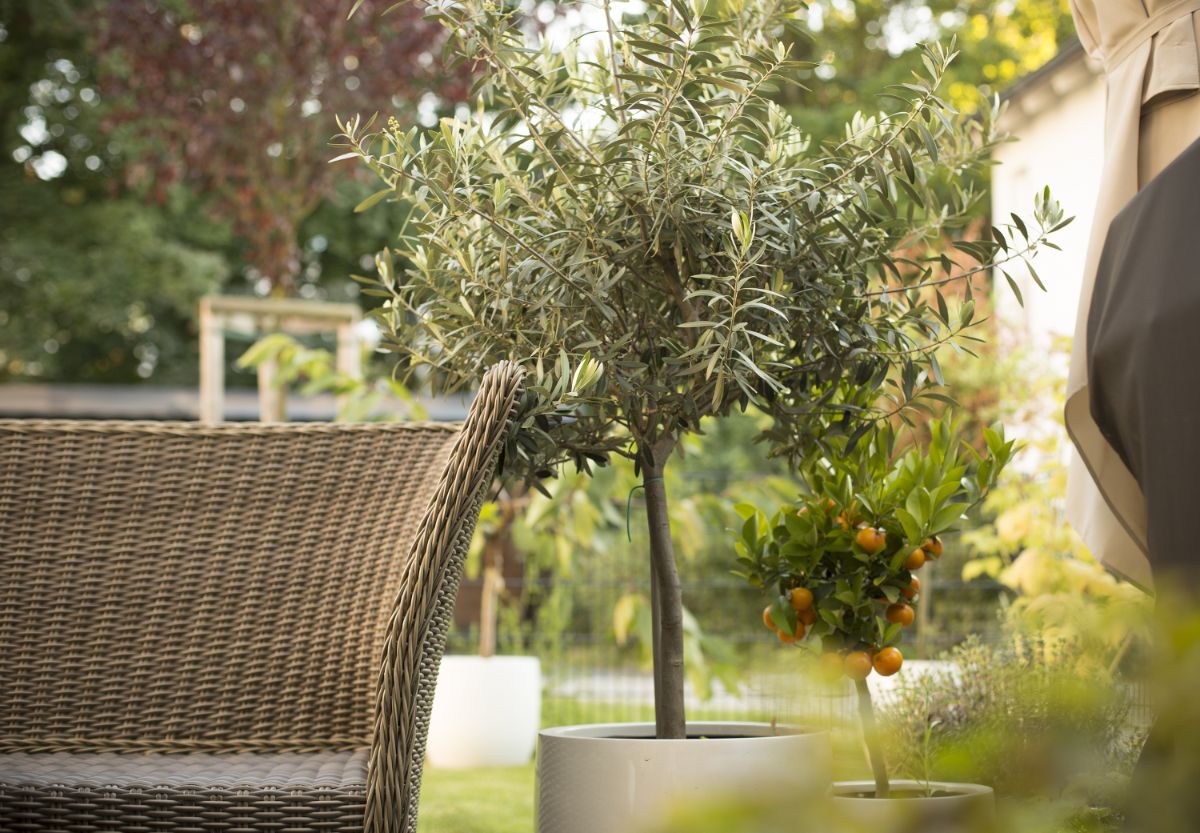
| Plant name: | Olive tree |
| Light requirements: | Full sun |
| Water requirements: | Moderate to low |
| Growing zone: | Zones 8 to 11 |
| Special features: | Good for containers; Edible |
Native to the Mediterranean, Asia, and Africa, olive trees are bewitching plants with edible fruit and silvery-green leaves, which remain evergreen in warm areas. However, olive trees are not cold-hardy, and they can only be grown outdoors in USDA growing zones 8 to 11. In cooler locations, olive trees can be kept in containers and overwintered indoors in a sunny location.
Surprisingly low maintenance, olive trees are quite useful to wildlife, but you may not want to share your olive harvest with local birds! Among home gardeners, there are many edible olive varieties to choose from, including ‘Manzanilla,’ which produces scrumptious olives that are ideal for pickling or pressing into olive oil. ‘Kalamata’ and ‘Arbequina’ are also commonly grown for their edible fruit, while dwarf olive trees make tasteful additions to Mediterranean-themed gardens.
13. Wintercreeper (Euonymus fortunei)
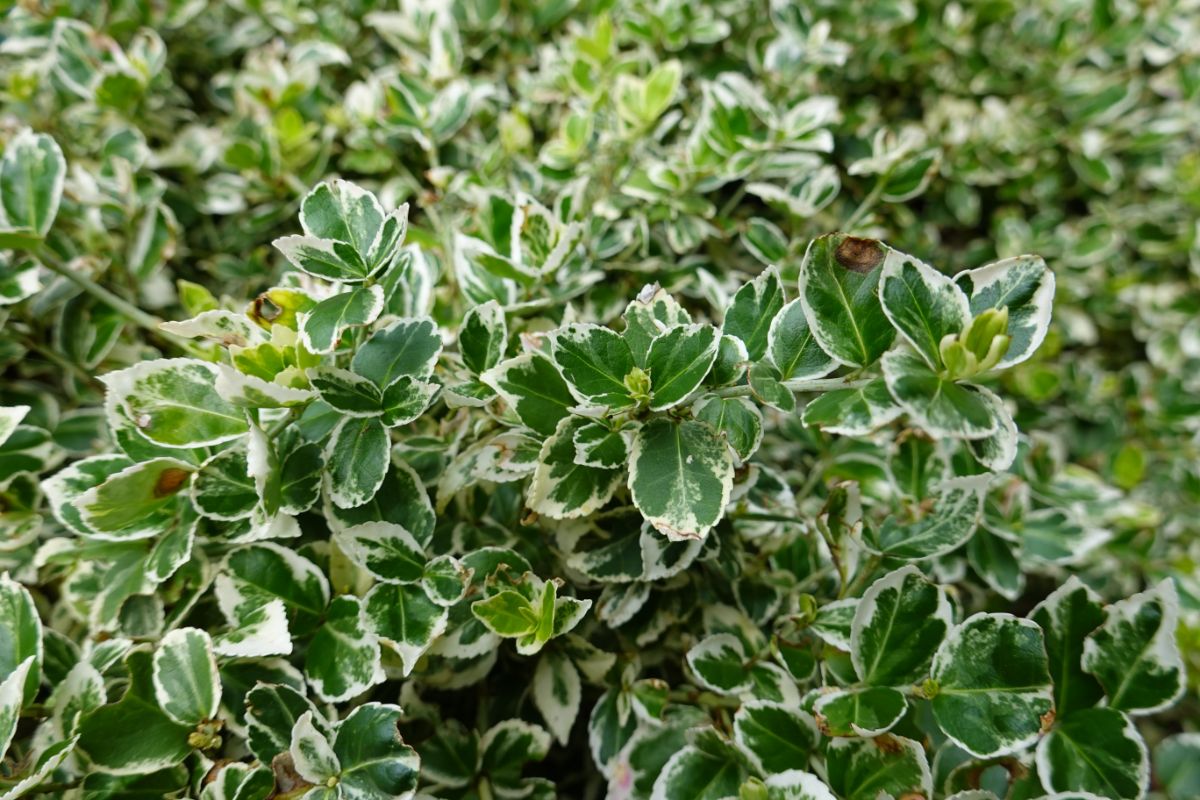
| Plant name: | Wintercreeper |
| Light requirements: | Full sun to part shade |
| Water requirements: | Moderate to low |
| Growing zone: | Zones 5 to 9 |
| Special features: | Groundcover |
Native to Asia, wintercreeper is a fast-growing evergreen that’s mostly cultivated for its dark green leaves, which transform into a vivid purplish-red hue in fall. Commonly kept as a groundcover for weed suppression and extra garden color, wintercreeper can also be trained on trellises as a climbing vine for extra garden privacy. Ultra-low maintenance once established, winter creeper doesn’t require much fuss, but these plants can sometimes be vulnerable to pests like mealybugs, aphids, and thrips.
Depending on your gardening style, you can allow wintercreeper to grow naturally, or you can prune the plant regularly to rejuvenate its growth. In some areas, wintercreepers can have invasive tendencies, though, and in these spots, regular pruning can help keep these sprawling plants in check. Today, there are many different types of wintercreeper plants to choose from, including the mat-forming ‘Kewensis' wintercreeper and 'Emerald Delight,’ which has larger leaves than many other cultivars.
14. Azalea (Rhododendron spp.)
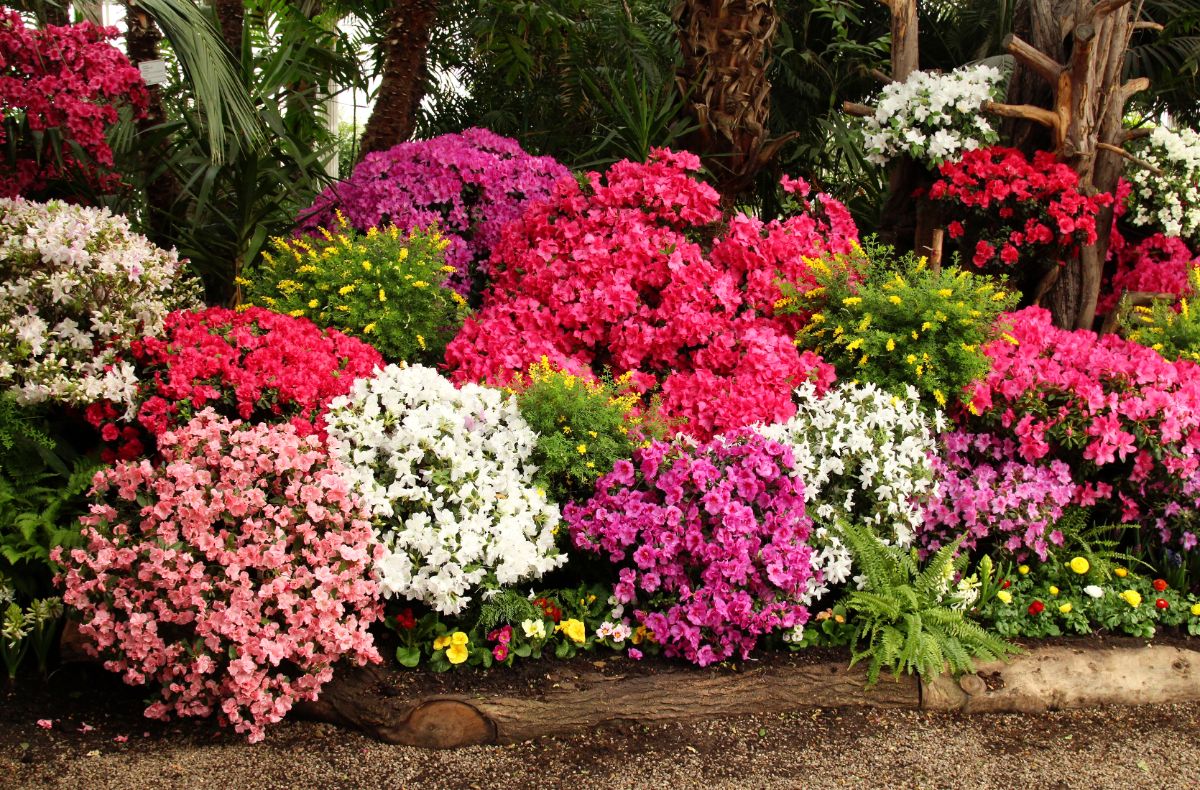
| Plant name: | Azalea |
| Light requirements: | Full sun to part shade |
| Water requirements: | Moderate |
| Growing zone: | Zones 5 to 9, depending on variety |
| Special features: | Colorful flowers attract pollinators; Good for containers |
Many gardeners consider azaleas to be some of the best landscaping shrubs, and their evergreen leaves provide year-round color to garden beds. However, azaleas are mostly known for their colorful springtime flowers, which are magnets for bees and other pollinators. A close relative of rhododendrons, azaleas pair well with junipers, blueberries, and other acid-loving plants, but they also look alluring with ornamental grasses and smaller ornamentals.
Most azaleas are not particularly cold hardy, and they can only be grown in USDA growing zones 6 through 9. However, there are a few hardy azalea types that can overwinter in growing zone 5. When selecting azaleas, always consider the winter temperatures in your area, but you may also want to look for reblooming azalea varieties, which will provide your garden and porch planters with longer-lasting blooms and spectacular color to boot!
15. Winter daphne (Daphne odora)
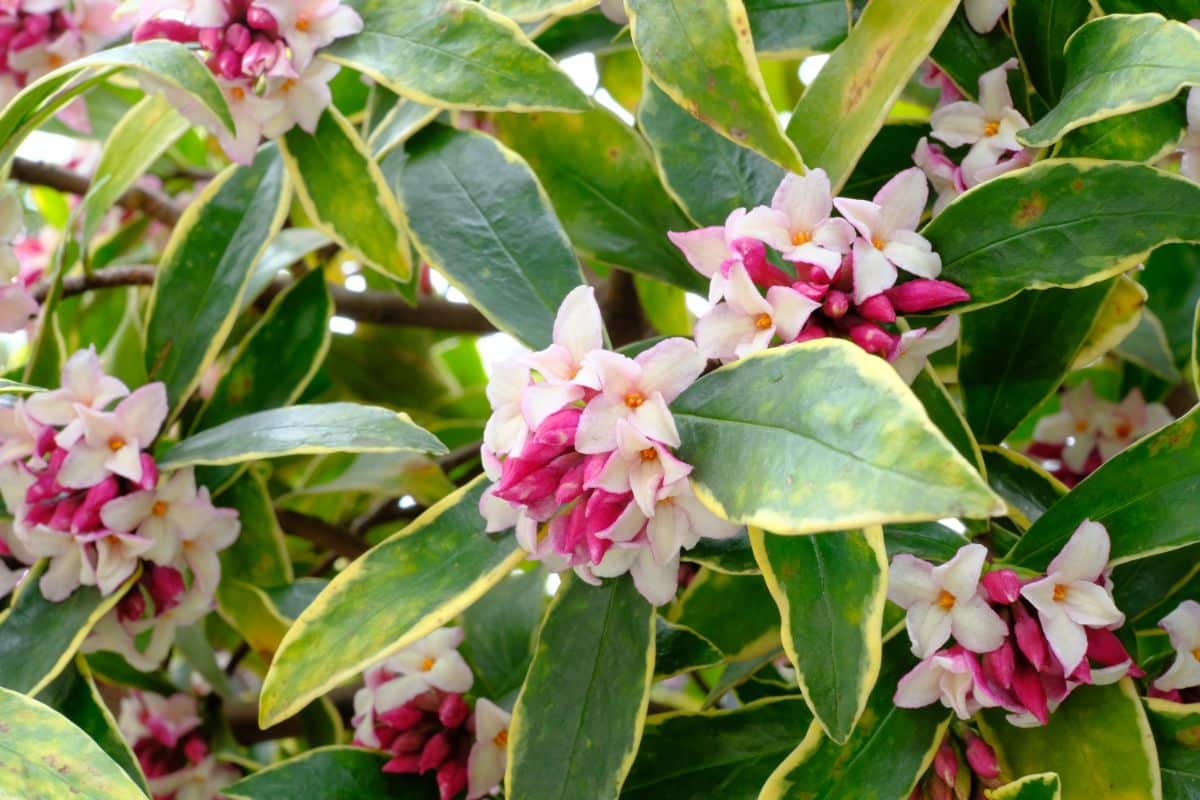
| Plant name: | Winter daphne |
| Light requirements: | Full sun to part shade |
| Water requirements: | High to moderate |
| Growing zone: | Zones 7 to 9 |
| Special features: | Fragrant flowers |
Winter daphne is known for its highly fragrant flowers, which have a floral scent with notes of citrus. A wonderful choice for planting near rest areas and front porches, daphne is a mounded, woody shrub that generally grows from 2 to 4’ wide by 4 to 6’ tall. Daphne’s size and easygoing nature make it a useful understory plant, but this plant can also be grown in pots with a bit of extra care.
Growing best in the dappled shade of larger trees, daphne plants tolerate drought conditions, but they do not like wet soil conditions. These plants also have sensitive root systems that don’t like to be transplanted or disturbed, so make sure you plant your daphne where you want it to stay! Winter daphne will sometimes produce darkly colored or red berries, but all parts of daphne plants are toxic to humans, pets, and livestock, so you may not want to grow these plants if you have small children.
Frequently asked questions
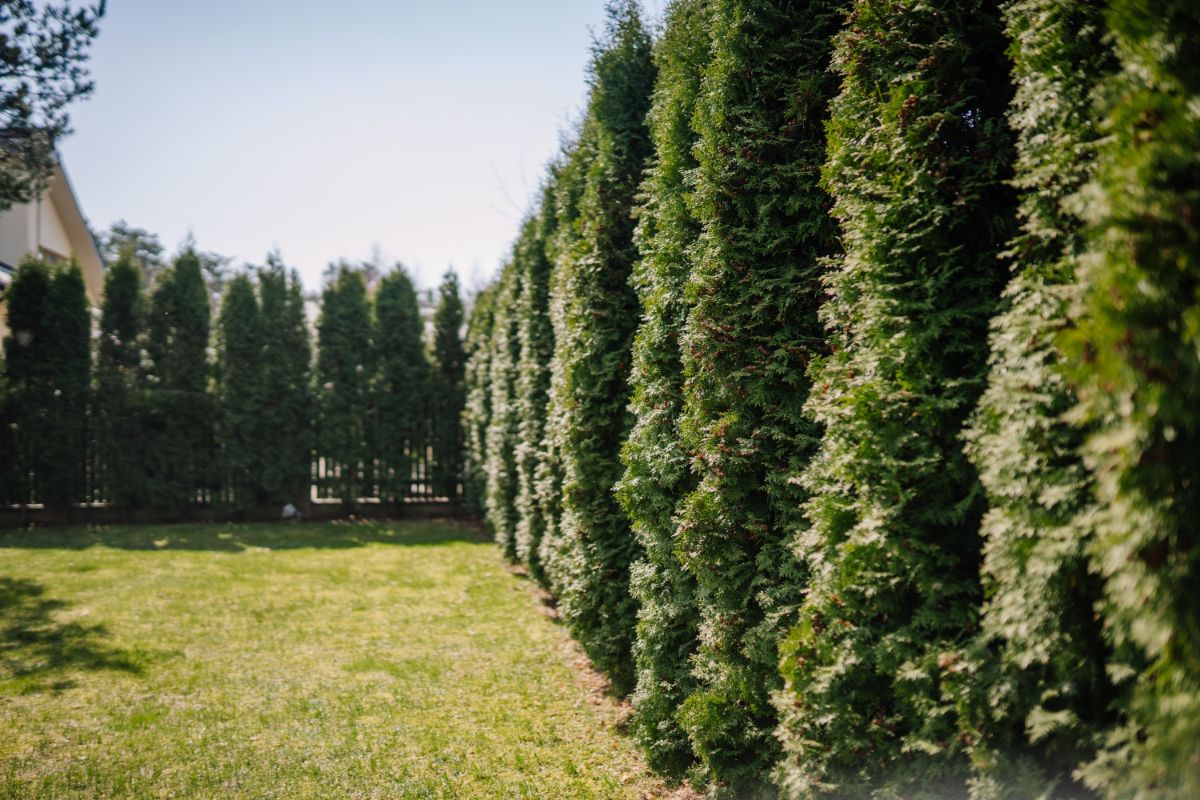
Arborvitae are some of the fastest-growing evergreens you can find, which is why these plants are often grown as privacy hedges. When properly cared for, arborvitae can grow up to 5’ per year!
Balsam fir is widely considered to be the most fragrant evergreen tree, and it’s often used in wreath making and garlands, so the scent can perfume homes around the holidays. Pines, other fir species, and spruce also have that rich “evergreen scent,” while winter daphne is particularly notable for its fragrant flowers.
Douglas fir, juniper, and white pines are the most popular evergreen varieties used in wreaths, but other pines, fir, and spruce species work well for holiday crafting too! With their vivid red berries, holly bushes are also sometimes employed in wreath making, but they are mostly used as colorful accents.
Most evergreens will provide winter shelter for birds, but holly is a particularly beneficial plant to grow if you want to attract feathered friends to your garden. Holly berries provide a much-needed source of food for birds, like cedar waxwings, when other sources of food are scarce in autumn and winter.
Generally no. While some evergreens may need to be pruned from time to time to maintain their classic pyramidal shape, evergreen trees and shrubs are pretty easygoing plants that don’t need a lot of fuss. Just be sure to provide your evergreens with the proper balance of light, soil, and nutrients, and they should grow happily and prolifically for many years to come.
It depends. Many hardy evergreens, like pines and fir, don’t typically need winter covering; however, some evergreens, like arborvitae, can be susceptible to winter damage. Arborvitae can sometimes split during winter, and evergreens, in general, can be browsed on by deer or damaged by road salt.
Summary
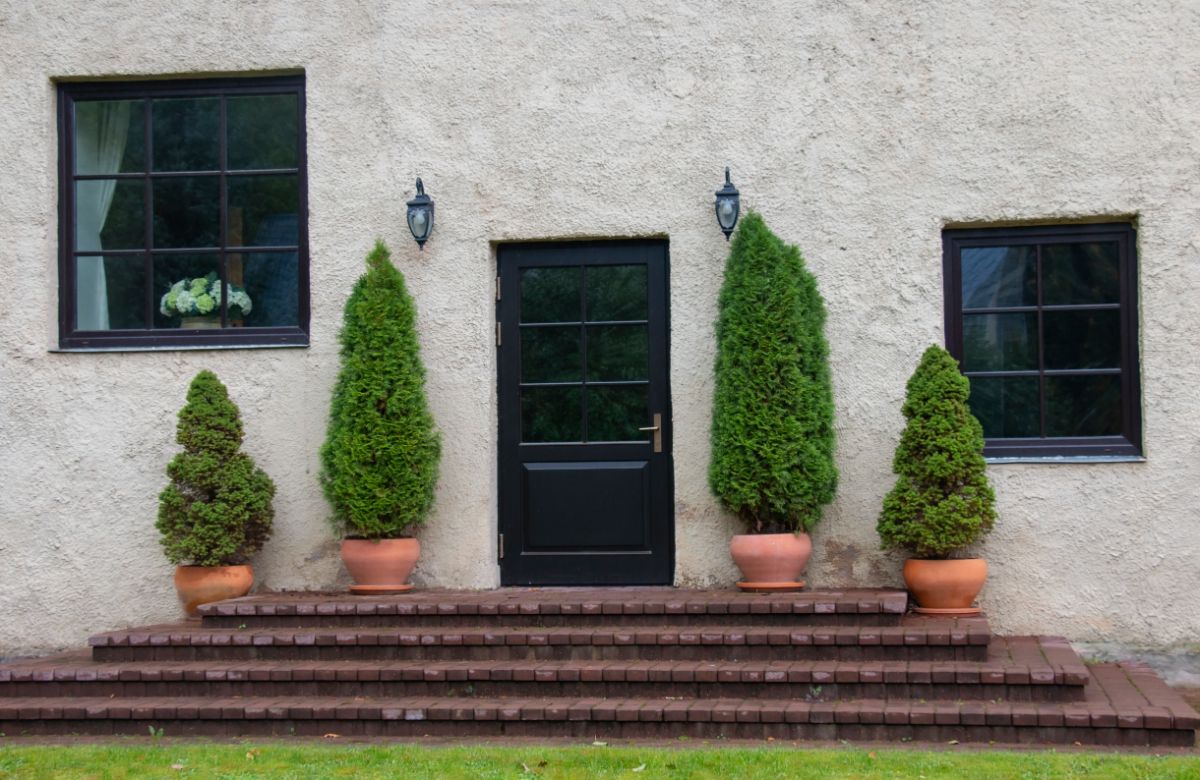
Evergreen trees and shrubs tend to be relatively easy to keep, but they can make a huge impact in garden beds. From adding extra privacy to delineating seating areas and other garden spaces, there are many different ways to use evergreen species in landscape designs. Plus, these plants are some of the best trees to grow if you want to attract pollinators, like fireflies, to your garden beds!
Once you’ve selected the right evergreen trees for your garden, all that’s left to do is plant your trees and tend them as needed. In general, evergreens should be planted in spring or autumn when the weather is mild, and they should be watered in well after planting to help the plant roots settle in. If you need to feed your evergreen trees, opt for a slow-release granular fertilizer and combine it with compost to give your plants the energy boost they need to produce all that lush, evergreen growth.
We hope the evergreens we’ve covered today have piqued your interest and helped to inspire your next planting arrangement. But if you’re still on the look for fast-growing privacy shrubs, we have a full guide on that too!

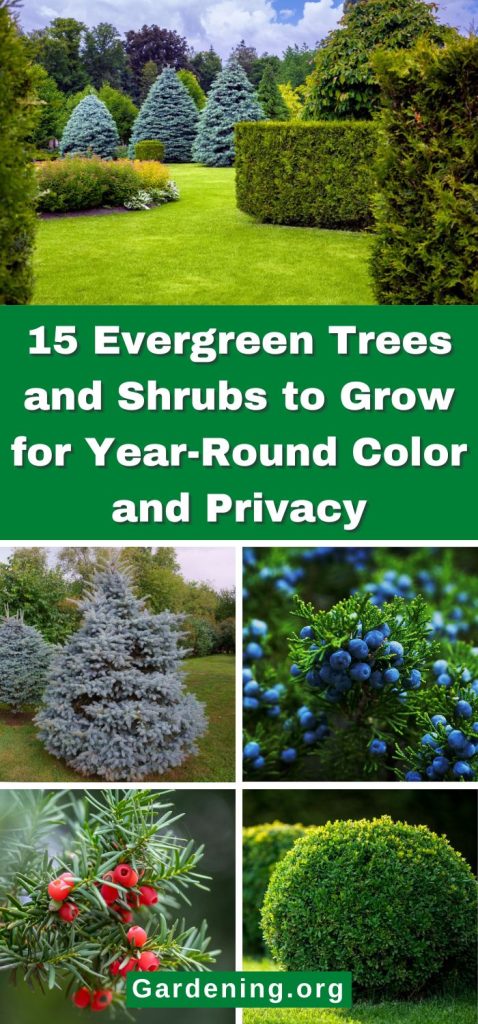
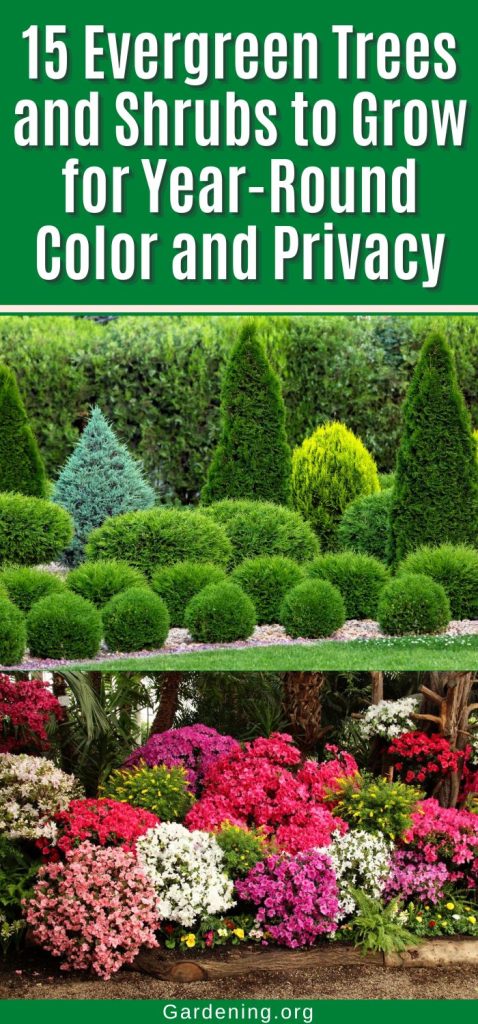
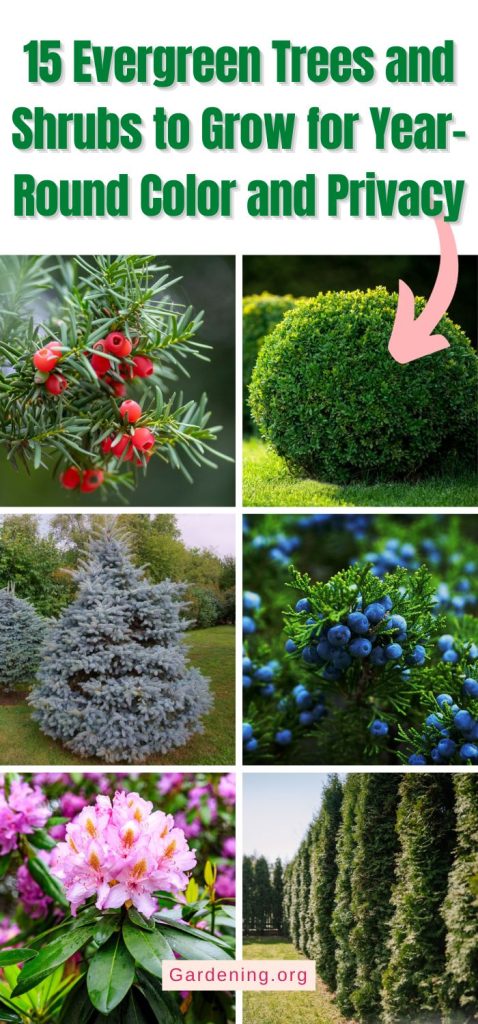
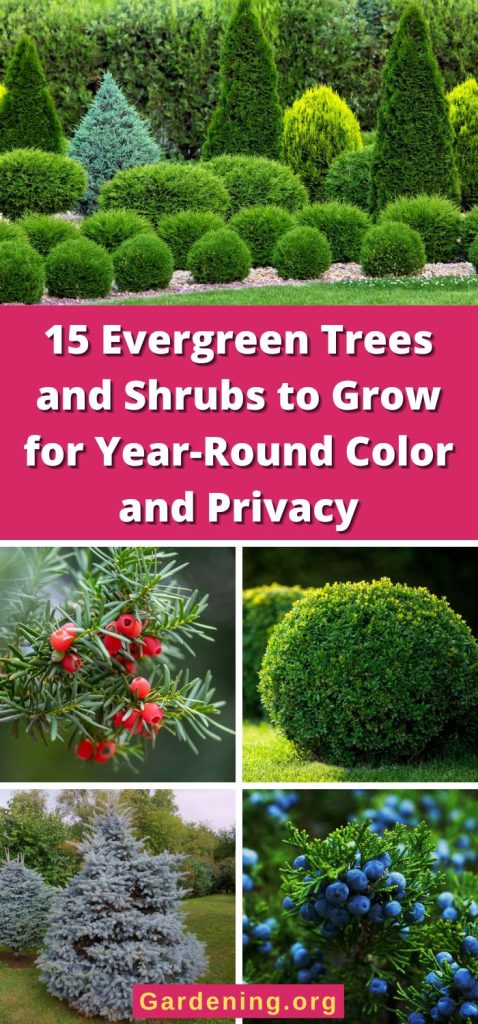
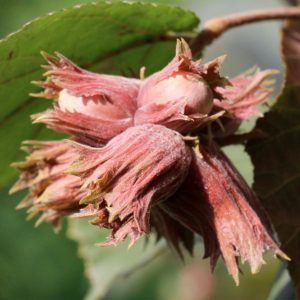
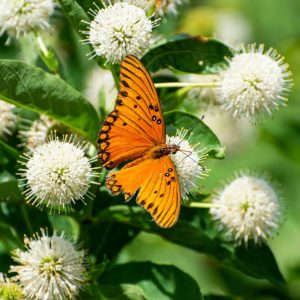
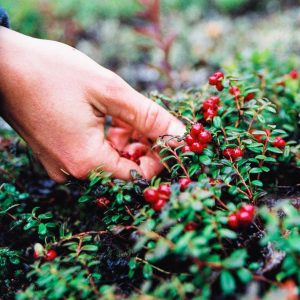
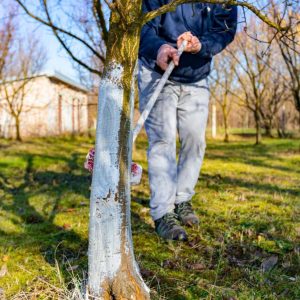
Mary Coakley
I read with great interest your email on how to deal with raised beds I will try it this year.I.am learning a lot from your emails.great work